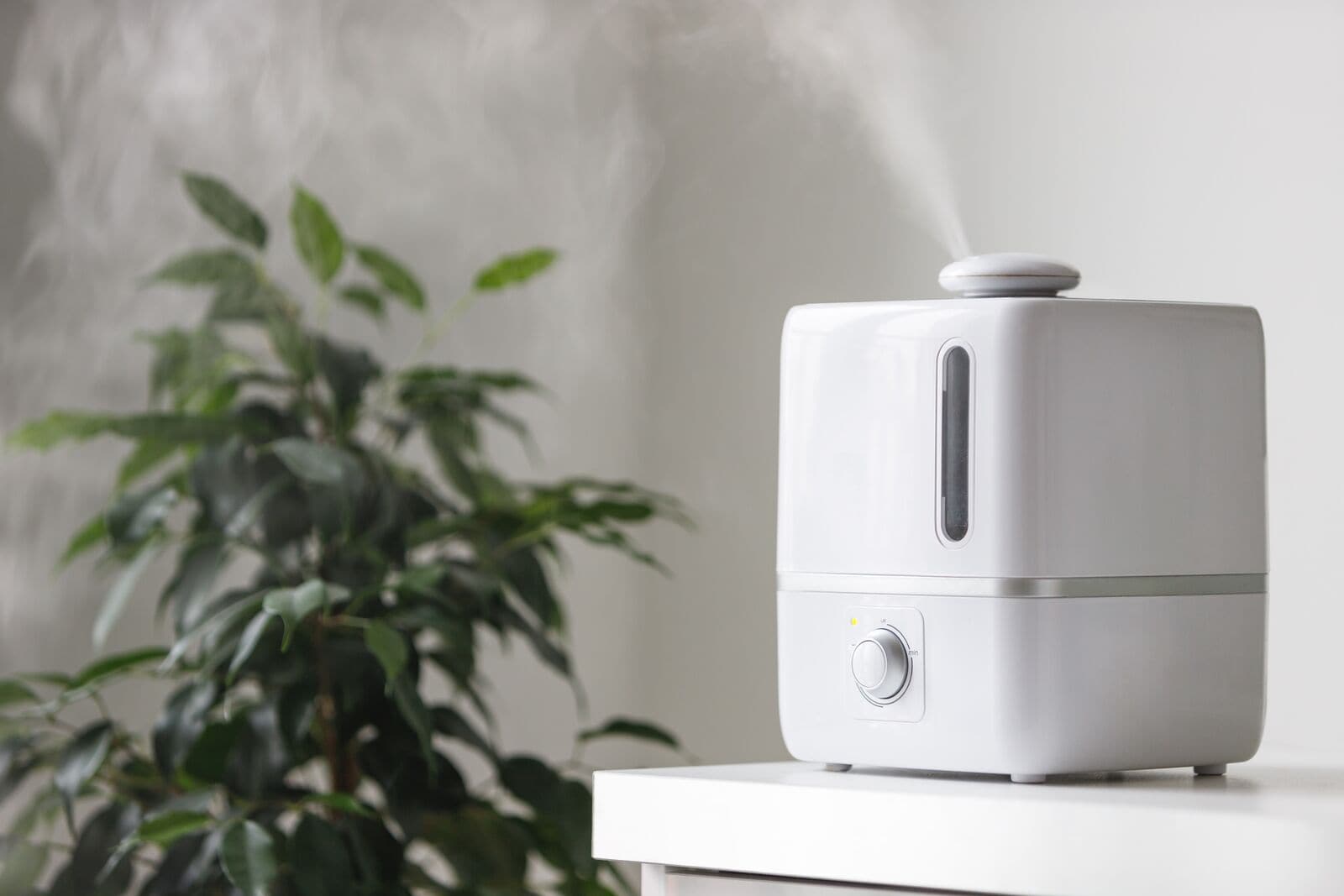Maintaining a good indoor air quality is essential for promoting health and well-being. Indoor air quality monitors play an important role in detecting various pollutants present in indoor environments.
From allergens to volatile organic compounds (VOCs), these smart monitors provide valuable insights into the quality of the air we breathe.
In this article, I have compiled a ton of information from various research papers and studies, so let us explore the common pollutants that indoor air quality monitors can detect.
and studies, so let us explore the common pollutants that indoor air quality monitors can detect.
Common Indoor Pollutants
| Pollutant | What it is? | Common Sources |
|---|---|---|
| Particulate Matter (PM2.5) | Fine particles suspended in the air, originating from various sources such as combustion, dust, and pollen. | Cooking activities, tobacco smoke, household cleaning products, and pet dander. |
| Volatile Organic Compounds (VOCs) | Organic chemicals that can vaporize and enter the air from products such as paints, cleaning supplies, and furniture. | Building materials (e.g., paints, adhesives), household cleaners, furniture, and carpets. |
| Carbon Dioxide (CO2) | A colorless and odorless gas produced by human activities such as respiration and combustion, indicating indoor air quality and ventilation levels. | Human respiration, combustion from gas appliances, and poor ventilation. |
| Carbon Monoxide (CO) | A toxic gas produced by incomplete combustion of fuels, posing serious health risks when present in high concentrations. | Gas stoves, furnaces, fireplaces, vehicle exhaust in enclosed spaces, and tobacco smoke. |
| Formaldehyde | A colorless and pungent gas emitted by certain building materials, furniture, and consumer products, known to cause health issues. | Plywood, particleboard, adhesives, insulation, and new furniture. |
| Radon | A radioactive gas originating from the decay of uranium in soil and rock, seeping into buildings through cracks and openings. | Soil beneath buildings, well water, and building materials. |
| Ozone | A highly reactive gas present in outdoor air and generated indoors by certain appliances, associated with respiratory problems. | Photocopiers, printers, and air purifiers emitting ozone as a byproduct. |
| Nitrogen Dioxide (NO2) | A toxic gas primarily emitted from combustion sources, such as vehicles and heating systems, contributing to air pollution. | Gas stoves, space heaters, and improperly ventilated combustion appliances. |
Particulate Matter (PM):
Particulate matter (PM) refers to tiny particles suspended in the air, which can vary in size and composition. Understanding PM is essential for assessing indoor air quality.
(PM) refers to tiny particles suspended in the air, which can vary in size and composition. Understanding PM is essential for assessing indoor air quality.
Sources:
PM refers to a wide range of particles, including dust, pollen, smoke, soot, and emissions from automobiles and industrial processes.
These particles can originate from both outdoor sources, such as traffic emissions and industrial activities, and indoor sources like cooking, smoking, and household cleaning.
Size Classification:
PM is classified based on size, with the most common categories being PM10, PM2.5, and PM0.1.
PM10 refers to coarse particles with a diameter of 10 micrometres or less, while PM2.5 consists of fine particles with a diameter of 2.5 micrometres or less.
PM0.1, also known as ultrafine particles, are particles smaller than 0.1 micrometers and are of particular concern due to their ability to penetrate deep into the respiratory system.
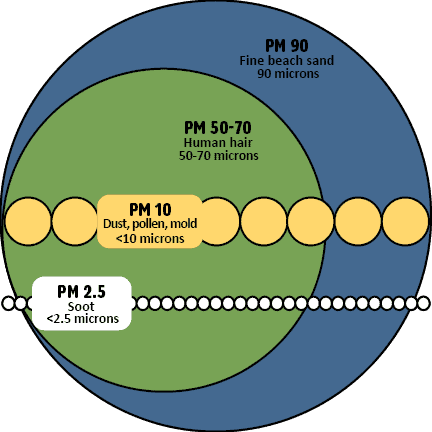
Health Impacts:
Exposure to PM can have significant health implications, particularly for vulnerable populations such as children, the elderly, and individuals with respiratory or cardiovascular conditions.
PM can exacerbate respiratory conditions such as asthma and chronic obstructive pulmonary disease (COPD) , trigger allergic reactions, and contribute to the development of cardiovascular problems including heart attacks and strokes.
, trigger allergic reactions, and contribute to the development of cardiovascular problems including heart attacks and strokes.
Indoor Air Quality Monitoring:
Indoor air quality monitors equipped with particle sensors play a crucial role in detecting and measuring PM concentrations in indoor environments.
These monitors provide real-time data on airborne particle levels, allowing occupants to assess indoor air quality and take appropriate actions to mitigate exposure to PM.
provide real-time data on airborne particle levels, allowing occupants to assess indoor air quality and take appropriate actions to mitigate exposure to PM.
Preventive Measures:
To reduce indoor PM levels, it’s essential to implement preventive measures such as improving ventilation, using air purifiers with HEPA filters , and minimizing indoor sources of PM through proper cleaning practices and reducing activities that generate particles, such as smoking or burning candles.
, and minimizing indoor sources of PM through proper cleaning practices and reducing activities that generate particles, such as smoking or burning candles.
Volatile Organic Compounds (VOCs):
Volatile organic compounds (VOCs) are a diverse group of chemicals that can evaporate into the air at room temperature. Understanding VOCs is crucial for assessing indoor air quality.
VOCs comprise a wide range of organic chemicals emitted from various sources, including building materials, furniture, household products such as paints and solvents, and indoor activities like cooking and cleaning.
Common VOCs include formaldehyde, benzene, toluene, xylene, and various hydrocarbons, each with its own sources and potential health effects.
Health Impacts:
Prolonged exposure to VOCs can result in a spectrum of short-term and long-term health effects , depending on the compound and concentration levels.
, depending on the compound and concentration levels.
Short-term effects may include eye, nose, and throat irritation, headaches, dizziness, and nausea, while long-term exposure to certain VOCs has been linked to more severe health issues such as respiratory problems, neurological disorders, and organ damage.
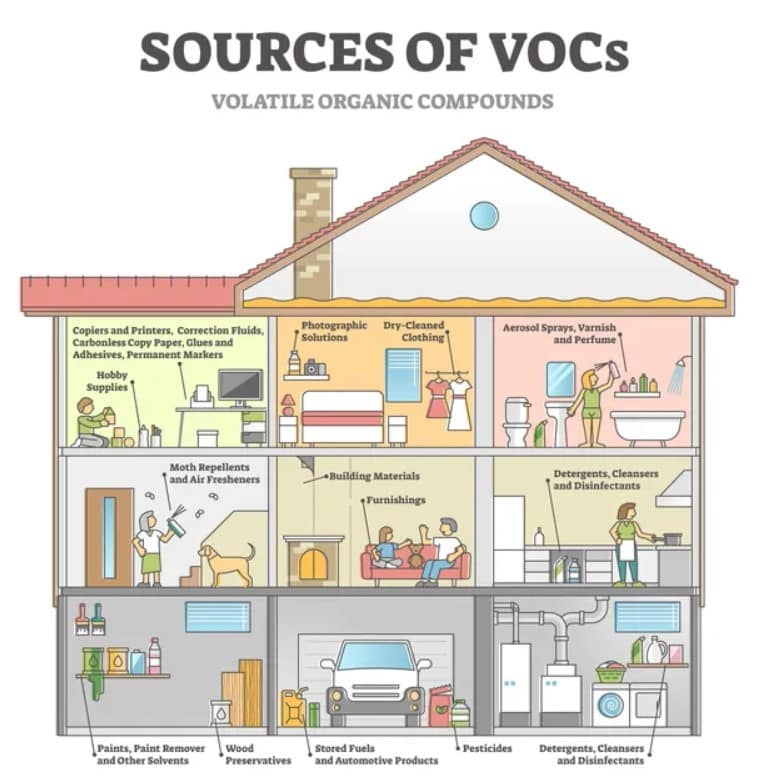
Indoor Sources:
Indoor sources of VOCs include building materials such as paints, adhesives, and carpeting, as well as furnishings like upholstered furniture, mattresses, and curtains.
Household products such as cleaning agents, air fresheners, and personal care products can also emit VOCs, contributing to indoor air pollution.
Additionally, activities such as cooking with gas stoves, smoking indoors, and using unvented fuel-burning appliances can release VOCs into the air.
Monitoring VOCs:
Indoor air quality monitors equipped with VOC sensors play a critical role in detecting and measuring VOC concentrations in indoor environments.
equipped with VOC sensors play a critical role in detecting and measuring VOC concentrations in indoor environments.
These monitors provide real-time data on VOC levels, enabling you to assess indoor air quality and identify  potential sources of VOC emissions.
potential sources of VOC emissions.
Monitoring VOCs is particularly important for sensitive environments such as homes, schools, and workplaces, where prolonged exposure to VOCs can pose health risks.
How to control it?
To reduce VOC exposure indoors, it’s essential to employ mitigation strategies such as proper ventilation, using low-VOC or VOC-free building materials and household products, and implementing source control measures.
Increasing ventilation rates, particularly with outdoor air, helps dilute indoor VOC concentrations and reduce exposure.
Choosing eco-friendly building materials and products labeled as low-VOC or VOC-free can minimize emissions of harmful chemicals into the indoor environment.
Carbon Dioxide (CO2):
Carbon dioxide (CO2) is a colorless, odorless gas that is naturally present in the atmosphere and is produced through various human activities and natural processes.
Understanding CO2 levels is essential for assessing indoor air quality.
Sources:
CO2 is generated primarily through human respiration, combustion processes, and natural phenomena such as volcanic eruptions and wildfires.
In indoor environments, common sources of CO2 include human breathing, combustion of fossil fuels for heating and cooking, and emissions from vehicles in enclosed spaces such as parking garages.
Indoor Air Quality Indicator:
Elevated levels of CO2 indoors can serve as an indicator of inadequate ventilation and the accumulation of indoor pollutants.
As occupants exhale CO2, indoor concentrations can rise, especially in poorly ventilated spaces with limited fresh air exchange.
Monitoring CO2 levels is crucial for assessing indoor air quality and ensuring that ventilation systems effectively remove pollutants and maintain a healthy indoor environment.
and maintain a healthy indoor environment.
Importance of Monitoring:
CO2 monitoring is particularly important in occupied spaces such as homes, offices, schools, and commercial buildings, where high occupancy levels can lead to elevated CO2 concentrations.
Continuous monitoring of CO2 levels allows occupants to identify ventilation deficiencies, optimize HVAC systems, and implement corrective measures to improve indoor air quality.
Real-Time Monitoring:
Indoor air quality monitors with CO2 sensors measure CO2 concentrations in real-time, providing immediate feedback on indoor air quality conditions.
These monitors show CO2 levels in parts per million (ppm) and provide visual or audible alerts when concentrations exceed recommended limits.

Ventilation Optimization:
By monitoring CO2 levels, you can adjust ventilation systems to maintain optimal indoor air quality levels.
Increasing ventilation rates or introducing outdoor air can help dilute CO2 concentrations and reduce the risk of indoor air pollution-related health effects .
.
Carbon Monoxide (CO):
Carbon monoxide (CO) is a highly toxic gas produced by the incomplete combustion of fossil fuels, such as natural gas, oil, and wood. Understanding CO levels is critical for safeguarding indoor air quality.
Sources and Production:
Carbon monoxide is generated primarily through the combustion of fossil fuels in appliances such as gas furnaces, water heaters, stoves, fireplaces, and vehicle engines.
is generated primarily through the combustion of fossil fuels in appliances such as gas furnaces, water heaters, stoves, fireplaces, and vehicle engines.
Incomplete combustion due to insufficient oxygen supply or malfunctioning equipment can lead to the production of CO gas.
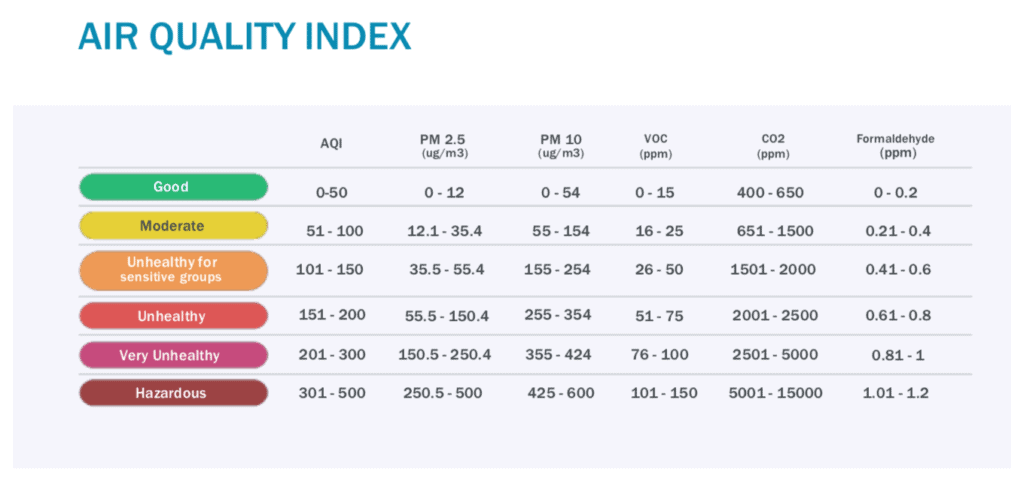
Characteristics and Detection Challenges:
CO is odorless and colorless making it imperceptible to human senses without specialized equipment.
Due to its undetectable nature, CO poisoning can occur silently, leading to serious health consequences or even fatalities if exposure levels are high enough.
Health Risks:
Inhalation of CO interferes with the body’s ability to transport oxygen , leading to symptoms ranging from mild headaches and dizziness to nausea, confusion, and ultimately, unconsciousness and death.
, leading to symptoms ranging from mild headaches and dizziness to nausea, confusion, and ultimately, unconsciousness and death.
Vulnerable populations such as infants, elderly individuals, and those with pre-existing health conditions are particularly susceptible to CO poisoning.
Importance of Monitoring:
Monitoring CO levels is essential for detecting potential combustion-related issues and preventing CO poisoning in indoor environments.
in indoor environments.
CO detectors, which are part of many indoor air quality monitors, continuously monitor CO concentrations and provide early warnings when levels exceed safe thresholds.
Detection and Prevention:
Indoor air quality monitors equipped with CO sensors detect and measure CO levels, alerting you about the presence of this toxic gas.
Early detection of elevated CO levels allows you to take immediate action, such as ventilating the area, shutting down malfunctioning appliances, and evacuating the premises if necessary.
Regular maintenance of combustion appliances, proper ventilation, and installation of CO detectors in key areas of the home are essential for preventing CO-related incidents.
Formaldehyde:
Formaldehyde, a colorless and highly reactive gas, is a prevalent indoor air pollutant originating from various sources. Understanding formaldehyde is crucial for maintaining healthy indoor environments.
Sources and Off-Gassing:
Formaldehyde is commonly emitted into indoor air through a process known as off-gassing from building materials, furniture, and consumer products.
from building materials, furniture, and consumer products.
Common sources of formaldehyde include pressed wood products (such as plywood and particleboard), insulation materials, carpets, paints, varnishes, adhesives, and certain household cleaners and personal care products.
Health Effects:
Formaldehyde exposure can lead to a range of health effects, including respiratory irritation, allergic reactions (such as skin rashes and asthma attacks), and long-term health risks.
Prolonged or high-level exposure to formaldehyde has been associated with an increased risk of certain cancers, including nasopharyngeal cancer and leukaemia.
Indoor Air Quality Monitoring:
Indoor air quality monitors equipped with formaldehyde sensors play a crucial role in detecting and measuring formaldehyde concentrations in indoor environments .
.
These monitors provide real-time data on formaldehyde levels, enabling occupants to identify sources of formaldehyde emissions and take appropriate mitigation measures.
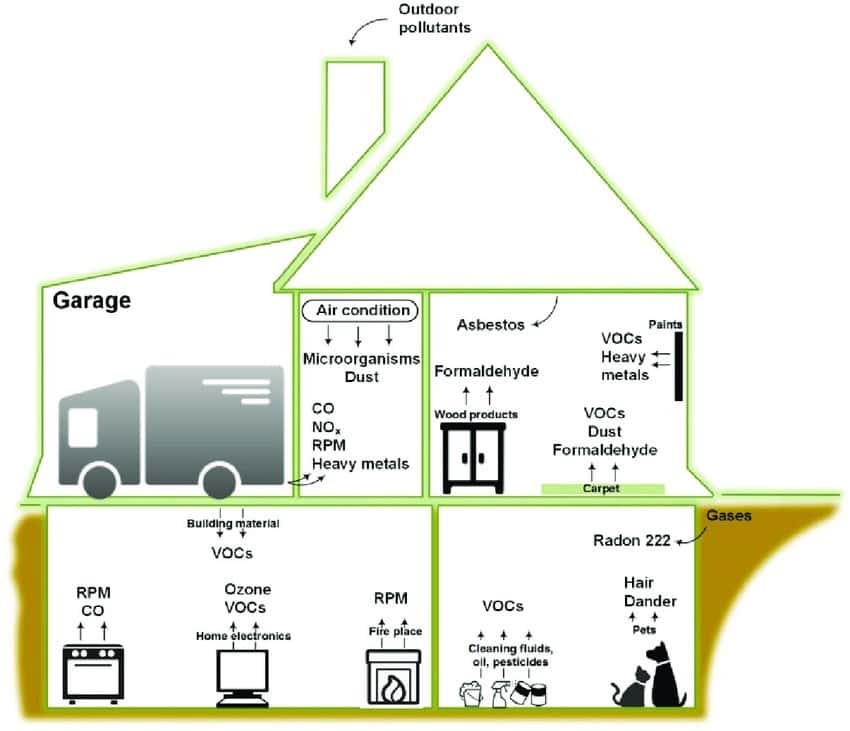
Occupational Exposure:
Occupational places such as factories, laboratories, and healthcare facilities may have higher levels of formaldehyde due to industrial processes, disinfection practices, and the use of formaldehyde-containing products.
Workers in these environments are at risk of occupational exposure to formaldehyde and may require monitoring and protective measures to minimize health risks.
How to control it?
To reduce formaldehyde exposure indoors, it’s essential to choose low-formaldehyde or formaldehyde-free building materials and furnishings, increase ventilation, and use air purifiers with formaldehyde-specific filters.
Proper ventilation, especially in newly constructed or renovated buildings, helps dissipate formaldehyde emissions and maintain healthy indoor air quality.
Radon:
Radon is a radioactive gas that occurs naturally in soil and rock and can seep into buildings through cracks in the foundation or gaps in construction materials.
Natural Occurrence and Sources:
Radon is ubiquitous in the environment and can be found in varying concentrations in soil, rock, and groundwater.
The primary sources of indoor radon are the soil and rock beneath buildings, which contain trace amounts of uranium that decay over time, releasing radon gas.
Entry into Buildings:
Radon can enter buildings through cracks in the foundation, gaps in construction materials, floor drains, sump pumps, and other entry points.
can enter buildings through cracks in the foundation, gaps in construction materials, floor drains, sump pumps, and other entry points.
Once inside, radon can accumulate to potentially hazardous levels, especially in poorly ventilated or tightly sealed structures.
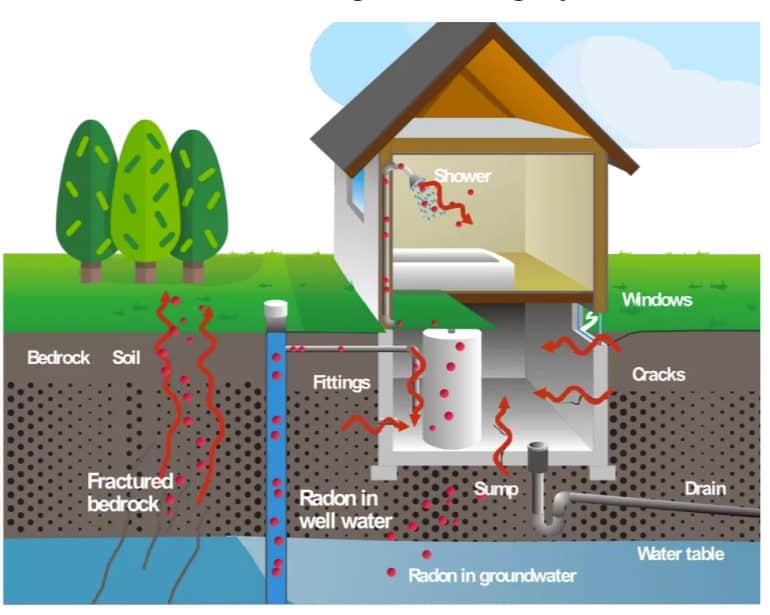
Health Risks:
Prolonged exposure to elevated levels of radon is a significant risk factor for lung cancer, particularly among smokers.
Radon gas decays into radioactive particles that can become trapped in the lungs when inhaled, emitting radiation that damages lung tissue and increases the risk of cancer over time.
Indoor Air Quality Monitoring:
Indoor air quality monitors equipped with radon sensors play a vital role in detecting and measuring radon levels in indoor environments.
These monitors provide you with real-time data on radon concentrations, allowing you to assess potential exposure risks and take appropriate measures to mitigate radon infiltration.
How to control it?
Mitigating radon exposure typically involves implementing measures to prevent radon from entering buildings and reducing existing radon levels indoors.
Strategies may include sealing foundation cracks and gaps, improving ventilation to increase air exchange rates, and installing radon mitigation systems such as sub-slab depressurization or ventilation systems with radon-specific fans.
Regulatory Considerations:
Many countries have established radon exposure guidelines and regulations to protect public health.
Homeowners are encouraged or required to test for radon and take remedial action if levels exceed recommended thresholds, particularly in high-risk areas known for elevated radon concentrations.
Allergens:
Allergens are substances that can trigger allergic reactions in sensitive individuals, leading to a range of symptoms such as sneezing, coughing, watery eyes, and respiratory distress.
Types of Allergens:
Common indoor allergens include pollen, mold spores, dust mites, pet dander, cockroach droppings, and certain indoor plants.
These allergens vary in size, composition, and sources but share the ability to provoke allergic reactions in susceptible individuals.
Health Impacts:
Exposure to indoor allergens can exacerbate existing allergies, trigger asthma attacks, and contribute to respiratory symptoms and discomfort.
Sensitive individuals may experience allergic reactions ranging from mild discomfort to severe respiratory distress, depending on the allergen type and concentration.
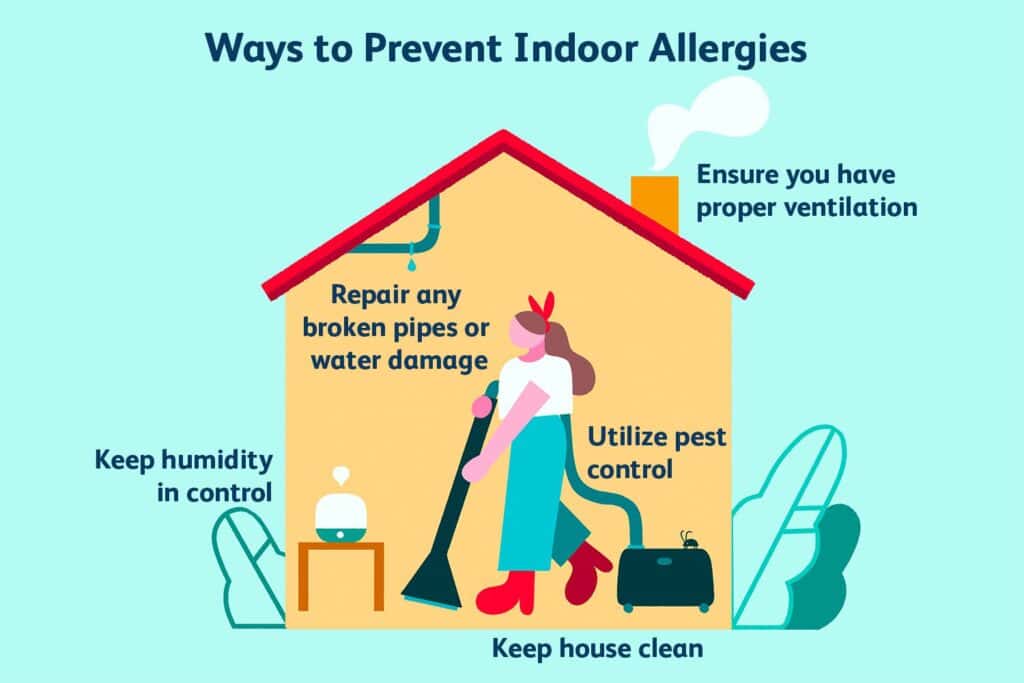
Monitoring Indoor Allergen Levels:
While most indoor air quality monitors do not directly detect allergens, they can indirectly assess indoor air quality by measuring factors such as humidity, temperature, particulate matter levels, and volatile organic compounds (VOCs), which can indicate the presence of allergens.
High humidity levels can promote mold growth and dust mite proliferation, increasing indoor allergen concentrations.
Elevated particulate matter levels may indicate the presence of airborne allergens such as pollen, pet dander, and dust particles.
Preventive Measures:
To reduce indoor allergen exposure, it’s essential to implement preventive measures such as regular cleaning, proper ventilation, and allergen-proofing strategies.
Vacuuming carpets and upholstery, washing bedding in hot water, and using allergen-proof mattress and pillow covers can help reduce dust mite populations and minimize allergen accumulation.
Controlling indoor humidity levels, maintaining adequate ventilation, and promptly addressing water leaks or moisture issues can help prevent mold growth and limit mold-related allergens.
Personalized Allergen Management:
Individuals with known allergies or respiratory conditions should consider personalized allergen management strategies, such as allergen-specific air purifiers, allergen avoidance techniques, and medical interventions prescribed by healthcare providers.
Monitoring indoor air quality and allergen levels can help you identify potential triggers and make informed decisions to improve respiratory health and overall well-being.
FAQs:
Can indoor air quality monitors detect all indoor pollutants?
Indoor air quality monitors are capable of detecting a wide range of indoor pollutants, including particulate matter, VOCs, CO2, CO, formaldehyde, and radon, among others.
However, no single monitor can detect all pollutants simultaneously. It’s essential to choose a monitor that suits your specific indoor air quality monitoring needs.
How often should indoor air quality be monitored?
The frequency of indoor air quality monitoring depends on various factors such as occupancy, activities, building age, geographic location, health concerns, and regulatory requirements.
Generally, regular monitoring at least once every few months is recommended to ensure ongoing indoor air quality management.
How accurate are indoor air quality monitors?
The accuracy of indoor air quality monitors can vary depending on factors such as the quality of the sensors, calibration methods, and environmental conditions.
While some monitors can provide reliable measurements for common pollutants like particulate matter, VOCs, and carbon dioxide, others may have limitations or require periodic calibration checks to maintain accuracy.
Conclusion:
Indoor air quality monitors play a vital role in detecting and monitoring indoor pollutants, helping occupants maintain healthy indoor environments.
By detecting common pollutants such as particulate matter, VOCs, CO2, CO, formaldehyde, radon, and allergens, these monitors provide valuable insights into indoor air quality levels.
With advancements in sensor technology and data analytics, indoor air quality monitors continue to evolve, empowering people and organizations to make informed decisions to protect their health and well-being.

